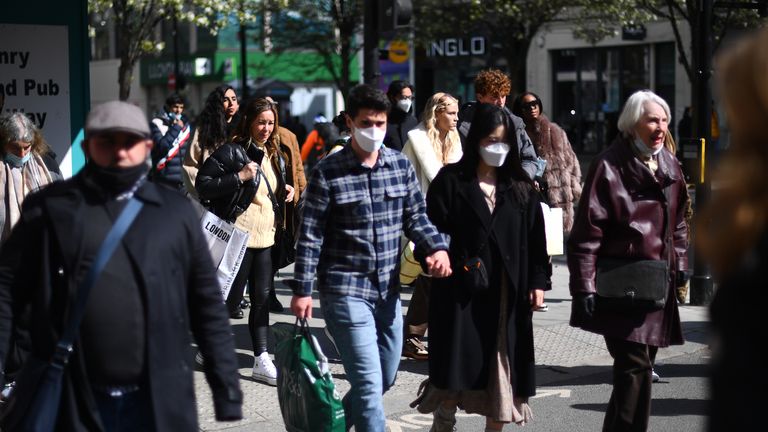Almost 50 stores per day closed down across the UK during the first half of the year, research suggests.
Some 8,739 outlets went out of business across high streets, retail parks and shopping centres between January and June, figures from the Local Data Company suggest.
But 3,488 opened during the same period, resulting a net decline of 5,251.
When compared with last year, the data suggests the rate of closures slowed down – with 11,120 shops shutting their doors in the first half of 2020 as the COVID pandemic hit, a net decrease of 6,001.
The research was conducted for accountancy firm PwC, which said government support during the pandemic – such as the furlough scheme, business rates relief and the rent moratorium – played major roles in helping operators stay afloat.
Despite this, the firm has warned the second half of the year will be “make or break” for many stores as government help is wound down.
Fashion retailers were worst affected – with 1,063 stores shutting in the first half of the year. Some 452 charity shops, 428 car and motorbike outlets, and 337 betting shops also closed permanently.
City centres saw a 4.3% drop in the number of occupied retail outlets as people and businesses moved to suburban or out-of-town locations, reflecting the rise in people working from home.
Commuter towns saw a 3% decrease in the number of shops, while villages saw a decline of 2.3%.
Lisa Hooker, leader of industry for consumer markets at PwC UK, said: “After an acceleration in store closures last year coupled with last-minute Christmas tier restrictions and lockdowns extending into 2021, we might have expected a higher number of store closures this year.
“Government support has proved to be a lifeline.
“However, the next six months will be make or break for many, particularly with the reinstatement of business rates, the winding down of furlough and the need for agreement on rent arrears, as well as uncertainty for hospitality businesses around further lockdowns, vaccine passports, and other operating restrictions.”
Most of the closures were on the country’s high streets, while shopping centres and retail parks were affected to a lesser extent.







